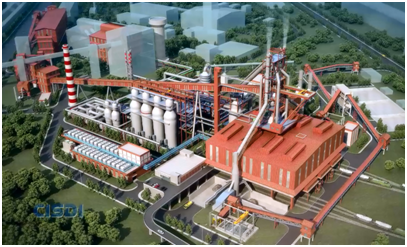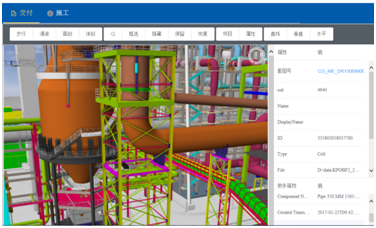TATA builds another giant with CISDI’s digital design expertise
Date:2018/12/10 Source: CISDI
TATA Steel is building its
second blast furnace – with a volume of 5,873 cubic metres - at its
Kalinganagar plant in Jaipur, India.
It will be the largest blast furnace in the
world and has a designed capacity of 4.375 million tonnes a year.
The construction process has run smoothly
since work began in June 2018.
CISDI is applying its digital design
technology to the project to help TATA achieve smart construction and
operations. This includes BIM simulation and parameterisation, PID (process and
instrument diagram), virtual reality for training purposes and digital
delivery.
Fact
File:
1) BIM simulation for optimisation
The hot stove’s shell weight can be reduced
by 5 per cent.
The hot and cold blast pipeline networks can
be made safer by 30 and 15 per cent respectively.
The uniform distribution of the hot blast
temperature can be improved by 10 per cent.
The casthouse platform temperature can be
reduced by 1-2 deg C.
2) PID design
PID
design co-ordinates multiple engineering disciplines online. CISDI has
completed over 700,000 A1-sized drawings and collated automatic statistics from
more than 13,000 data reports.
Through
integration and development, CISDI’s two-dimensional PID can be generated
seamlessly and accurately into three-dimensional data.
3)
BIM parameterization
The
cooling staves have been designed via the BIM parameterisation programme,
saving 75 per cent of the labour time normally taken to produce models and
drawings and shortening the master schedule by 66.7 per cent.
As
a result, a higher quality and more efficient blast furnace proper system can
be designed.
4)
BIM coordinated design
Multiple
engineering disciplines are co-ordinated online for BIM-based design. This
technology has prevented over 1,500 potential collisions or interferences and
negates the need for design changes and construction re-work. The quality of
the entire project is improved.
5)
Virtual reality training
The
building information model has been introduced into a virtual reality platform
to develop a tailored user experience and cost-effective training.
6)
Digital delivery
The
building information model has been introduced into the platform to associate
with the drawings and suppliers’ data. Such a digital design can provide the
model and data for construction and operations. This assists the client with
their digital management of construction and operations.

An
aerial view of the digitally-designed blast furnace 2 at TATA Steel’s
Kalinganagar plant

A
screenshot of CISDI’s digital design delivery platform

